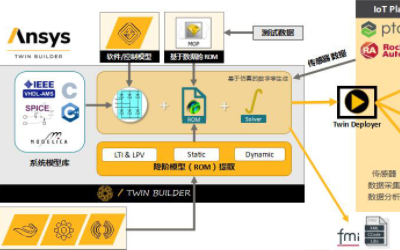Steel, aluminum tariff receipts flow to US
In the span of a few months, the Trump administration has collected more than $1.4 billion in additional revenue from steel and aluminum tariffs, according to a report by the Congressional Research Service, cnbc.com reported.
The CRS provides policy and legal analysis to committees and members of the House and Senate. CRS is a legislative branch agency within the US Library of Congress.
Between March 23 and July 16, the US raked in $1.1 billion and $344.2 million from levies on foreign steel and aluminum, respectively.
The US tariff on imported steel is 25 percent and 10 percent on aluminum. The steel and aluminum tariffs imposed in March were seen as the first salvo in the simmering trade dispute between the US and China, although they also apply to other countries.
US President Donald Trump on Friday announced he would take steps to double the tariffs on steel and aluminum imports from Turkey to 50 percent and 20 percent, respectively, amid a diplomatic dispute between the two nations.
CRS said the new tariffs could generate $7.5 billion — $5.8 billion on steel and $1.7 billion on aluminum — going by last year's import numbers.
In 2017, the US imported $29 billion worth of steel products covered by the tariffs and $17.4 billion worth of aluminum.
The tariffs could help trim the US deficit, as the Treasury's borrowing to fund government operations is on course to top $1 trillion this year for the first time, cnbc reported.
"Because of Tariffs we will be able to start paying down large amounts of the $21 Trillion in debt that has been accumulated," Trump tweeted on Aug 5. "At minimum, we will make much better Trade Deals for our country!"
The US Customs and Border Patrol collects tariff payments, which go to the Treasury's general fund.
"We're early in the stages, so I'm not going to give specific numbers … our long-term objective is not to collect tariffs," Treasury Secretary Steven Mnuchin said on CNBC's Squawk Box. "Our longer-term objective is to have free and fair and reciprocal trade."
The CRS report also said tariff revenue could be reduced by exemptions given by the US Commerce Department. As of Aug 6, the department had received more than 33,000 exclusion requests, approving 1,428 requests, while denying 702, cnbc reported.
The latest US tariffs on $16 billion of Chinese goods followed the first round of additional tariffs on $34 billion of Chinese imports, which took effect on July 6.
China has focused its retaliatory tariffs on US agricultural products. Several farm groups and politicians in states dependent on agricultural are calling for an end to the trade dispute, despite Trump pledging $12 billion in aid to farmers affected by the tariffs.
China has since July 6 begun to levy additional 25 percent tariffs on 517 types of agricultural products — including soybeans, cotton and pork — imported from the US. The total value of these imports last year was about $21 billion.
China recently announced that it might impose different levels of additional tariffs on US goods worth $60 billion, in response to American threats to impose more tariffs on Chinese goods worth $200 billion.
The list will include 387 kinds of agricultural products, so almost all agricultural products from the US will face higher tariffs once the latest countermeasures by China take effect.
Between March 23 and July 16, the US raked in $1.1 billion and $344.2 million from levies on foreign steel and aluminum, respectively.
The US tariff on imported steel is 25 percent and 10 percent on aluminum. The steel and aluminum tariffs imposed in March were seen as the first salvo in the simmering trade dispute between the US and China, although they also apply to other countries.
US President Donald Trump on Friday announced he would take steps to double the tariffs on steel and aluminum imports from Turkey to 50 percent and 20 percent, respectively, amid a diplomatic dispute between the two nations.
CRS said the new tariffs could generate $7.5 billion — $5.8 billion on steel and $1.7 billion on aluminum — going by last year's import numbers.
In 2017, the US imported $29 billion worth of steel products covered by the tariffs and $17.4 billion worth of aluminum.
The tariffs could help trim the US deficit, as the Treasury's borrowing to fund government operations is on course to top $1 trillion this year for the first time, cnbc reported.
"Because of Tariffs we will be able to start paying down large amounts of the $21 Trillion in debt that has been accumulated," Trump tweeted on Aug 5. "At minimum, we will make much better Trade Deals for our country!"
The US Customs and Border Patrol collects tariff payments, which go to the Treasury's general fund.
"We're early in the stages, so I'm not going to give specific numbers … our long-term objective is not to collect tariffs," Treasury Secretary Steven Mnuchin said on CNBC's Squawk Box. "Our longer-term objective is to have free and fair and reciprocal trade."
The CRS report also said tariff revenue could be reduced by exemptions given by the US Commerce Department. As of Aug 6, the department had received more than 33,000 exclusion requests, approving 1,428 requests, while denying 702, cnbc reported.
The latest US tariffs on $16 billion of Chinese goods followed the first round of additional tariffs on $34 billion of Chinese imports, which took effect on July 6.
China has focused its retaliatory tariffs on US agricultural products. Several farm groups and politicians in states dependent on agricultural are calling for an end to the trade dispute, despite Trump pledging $12 billion in aid to farmers affected by the tariffs.
China has since July 6 begun to levy additional 25 percent tariffs on 517 types of agricultural products — including soybeans, cotton and pork — imported from the US. The total value of these imports last year was about $21 billion.
China recently announced that it might impose different levels of additional tariffs on US goods worth $60 billion, in response to American threats to impose more tariffs on Chinese goods worth $200 billion.
The list will include 387 kinds of agricultural products, so almost all agricultural products from the US will face higher tariffs once the latest countermeasures by China take effect.








